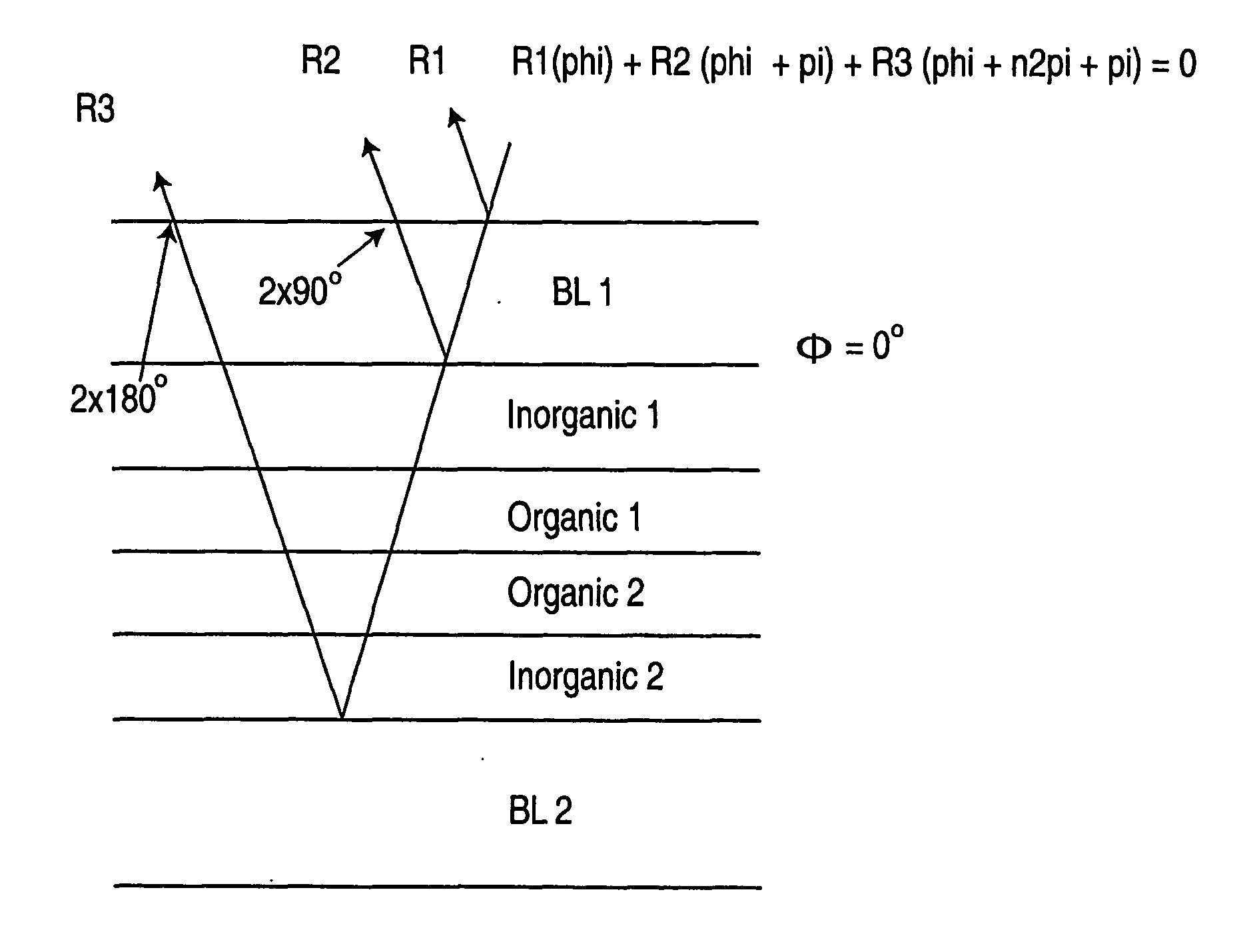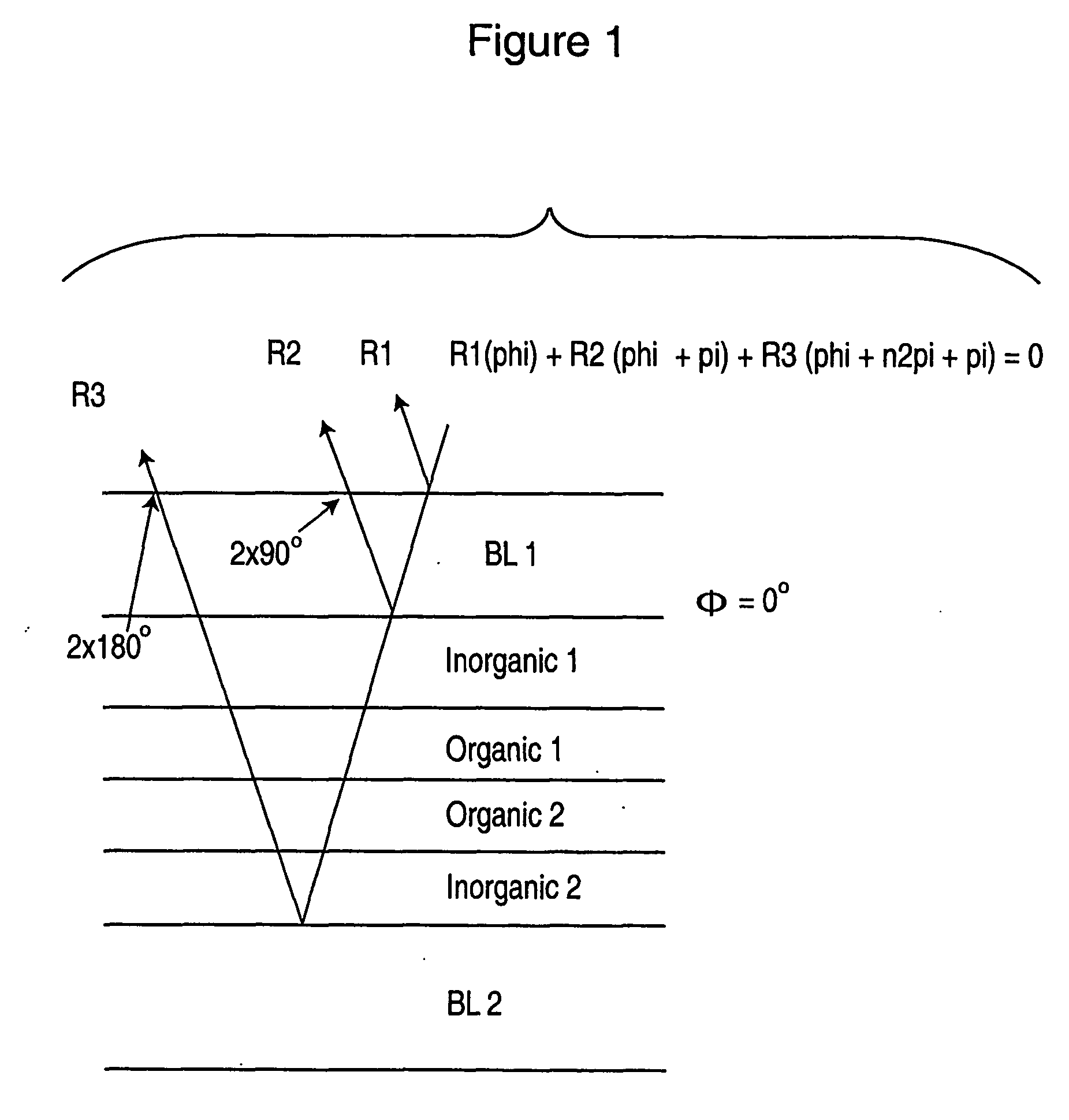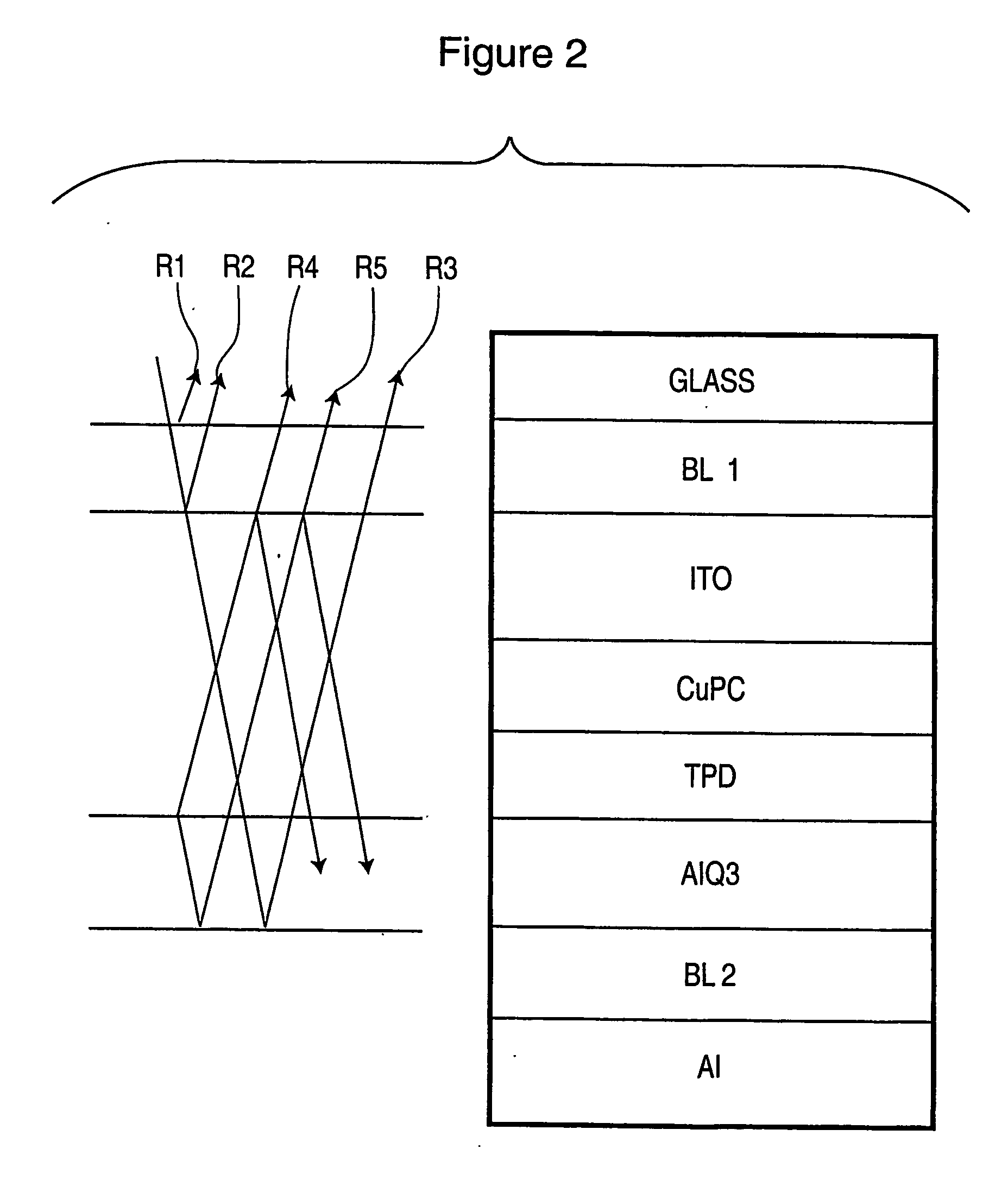Organic light emitting diode (oled) with contrast enhancement features
a technology of organic light and diodes, applied in the direction of discharge tubes/lamp details, discharge tubes luminescnet screens, electric discharge lamps, etc., can solve the problems of reducing the backward emitted light towards the rear of the display, partially negating the advantages of constructive interference, and not being suitable for prior art structures
- Summary
- Abstract
- Description
- Claims
- Application Information
AI Technical Summary
Benefits of technology
Problems solved by technology
Method used
Image
Examples
Embodiment Construction
[0016] Referring now to FIG. 1, a semi-reflecting thin film BL 1 is disposed adjacent one side of a microcavity comprising inorganic layers such as ITO, AlSiO, etc. (identified in FIG. 1 as Inorganic 1, Inorganic 2) between which are disposed light emitting layers (identified as Organic 1, Organic 2), while a reflective structure BL 2 is disposed adjacent the opposite side of the microcavity. As discussed below in connection with FIGS. 2 and 3, the layer BL 2 may either be fully reflecting, or may instead partially transmit and phase shift light that is reflected off of a further fully reflective layer (e.g. Al layer). The light emitting layers generate light through electroluminescence and are fabricated from material that is nominally transparent to ambient light entering the device, and which causes a phase shift of that ambient light, as will be discussed in greater detail below.
[0017] Semi-reflecting structure BL 1 may comprise a single-layer film or a multi-layer film, as dis...
PUM
 Login to View More
Login to View More Abstract
Description
Claims
Application Information
 Login to View More
Login to View More - R&D
- Intellectual Property
- Life Sciences
- Materials
- Tech Scout
- Unparalleled Data Quality
- Higher Quality Content
- 60% Fewer Hallucinations
Browse by: Latest US Patents, China's latest patents, Technical Efficacy Thesaurus, Application Domain, Technology Topic, Popular Technical Reports.
© 2025 PatSnap. All rights reserved.Legal|Privacy policy|Modern Slavery Act Transparency Statement|Sitemap|About US| Contact US: help@patsnap.com



